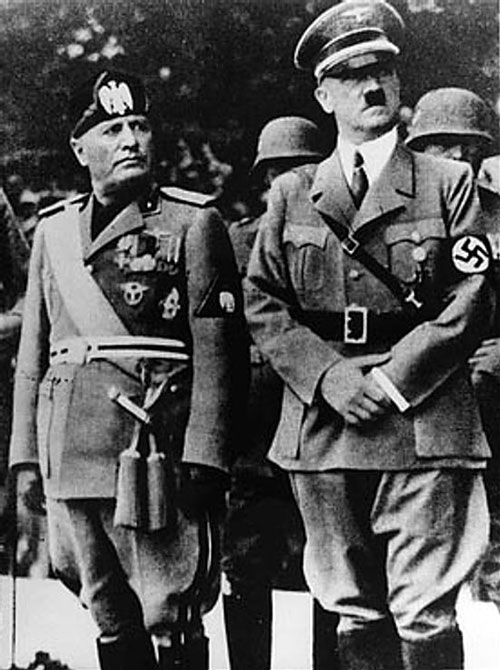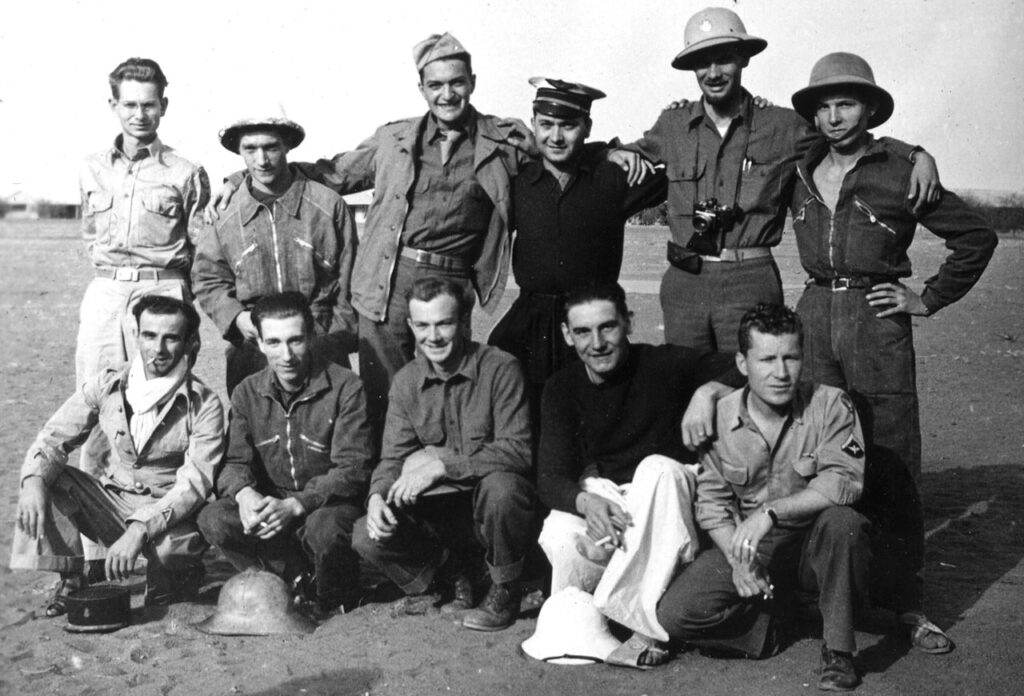- Start: World War 2 started on September 1, 1939, when Hitler’s troops entered Poland under an agreement with the Soviet Union called the ‘Hitler-Stalin Pact’. In the first half of 1940, Hitler defeated Denmark, Norway, the Netherlands, Belgium and Luxembourg in the so-called ‘Blitzkriege’. During the summer, he took France in just 6 weeks, but lost the Battle of Britain
- Operation Barbarossa: On June 22, 1941, he launched Operation Barbarossa, where German troops reinforced Italian troops (under Mussolini) in the Balkan War (which went relatively badly for the Italians)
- The fate of the German people: Hitler’s conviction was clear: either the German people had to fight and die a matyr’s death, or they had to succumb to other, stronger peoples – there was no middle ground. On November 27, 1941, Hitler stated the following: “If the German people are not strong and sacrificial enough to give their blood for their existence, they must perish and be destroyed by another, stronger power. I shall not shed a tear for the German people“
- Japan: Japan was allied with Germany and on December 7, 1941, the Japanese attacked the US naval bases at Pearl Harbor in Hawaii. This brought the US into the conflict and on December 11, 1941, Hitler decided to declare war on the US

Fact: Hitler (right) was one of the most central figures in World War 2
- 1943: The war really began to turn for the Germans at the Battle of Stalingrad, where the entire German 6th Army surrendered. The defeat was mainly due to Hitler forbidding the 6th Army from retreating from the front. Later that year, the Allies gained air supremacy over Germany, resulting in the total destruction of several German cities
- D-day: The invasion of Normandy began on June 6, 1944, marking the beginning of the end of World War II. However, on December 16, the Germans launched a final offensive in Belgium’s Ardennes region – but the offensive was doomed to failure from the start, as German forces were outnumbered
- The Nero command: Hitler issued the so-called ‘Nero Order’ on March 19, 1945, which was intended to make the enemy’s advance more difficult and to ensure that nothing was left behind – in practice, the order meant the destruction of all public property (especially infrastructure). Behind the order was also the idea that the end of the German people had come and that they would never use the property again anyway (so it might as well be destroyed). However, the order was never fully implemented because its execution was difficult under the chaotic circumstances. In addition, the Minister of Armaments, Albert Speer, who was in charge of carrying it out, did not like the idea and therefore deliberately thwarted it
- Enden: On April 30, 1945, Hitler committed suicide with his partner Eva Braun. The two had married the day before in a small ceremony in the Führer’s bunker. The suicide was carried out by each taking a cyanide capsule and Hitler also shot himself in the temple. Hitler’s staff then burned the two bodies in the Reich Chancellery garden. The bodies were then exhumed by the Russians and taken to Magdeburg, where they were secretly buried under a Russian military facility. They remained there until 1970, when the then KGB chief ordered them dumped in the Elbe River, which led them into the North Sea, where they disappeared
- The end of the warWorld War II ended on May 8, 1945 in Europe, but continued in Japan, where the Americans dropped the atomic bombs on Hiroshima on August 6 and Nagasaki on August 9 of the same year. On August 15, the Japanese surrendered and on September 2, 1945, the Declaration of Peace was signed, marking the final end of World War II.





